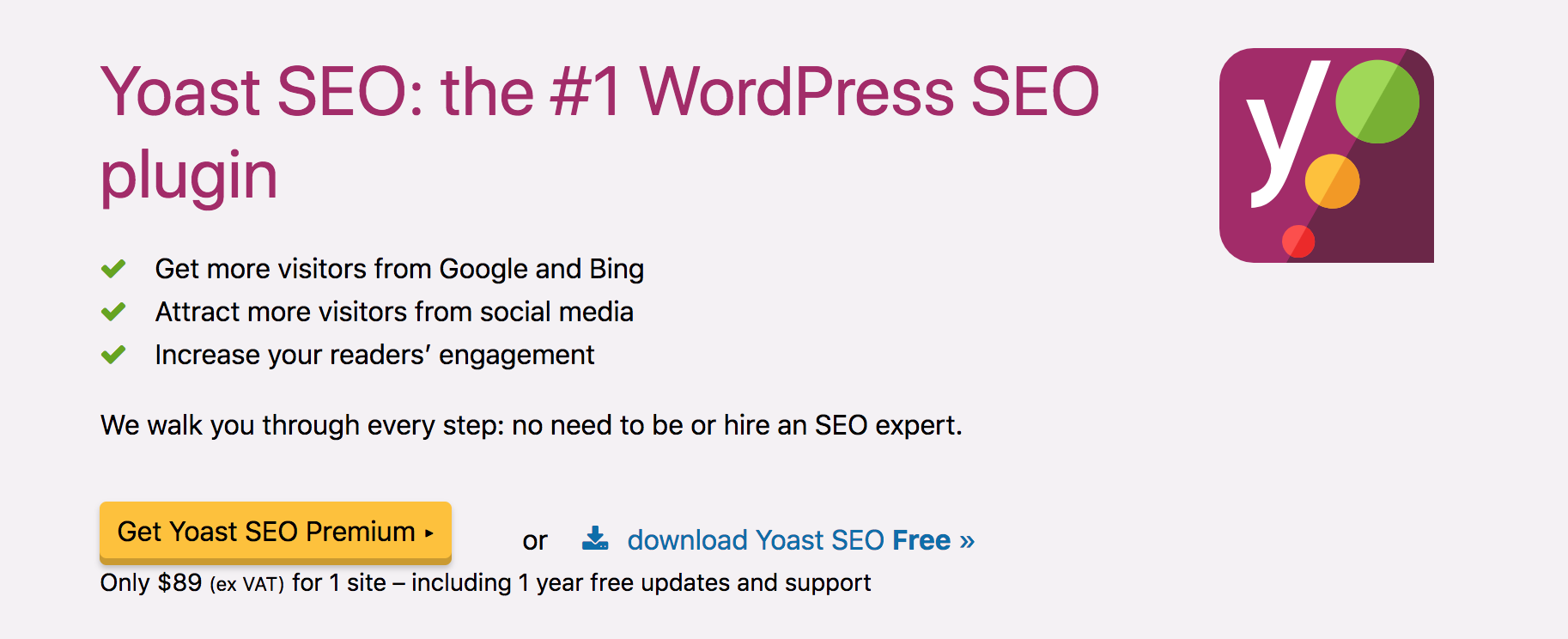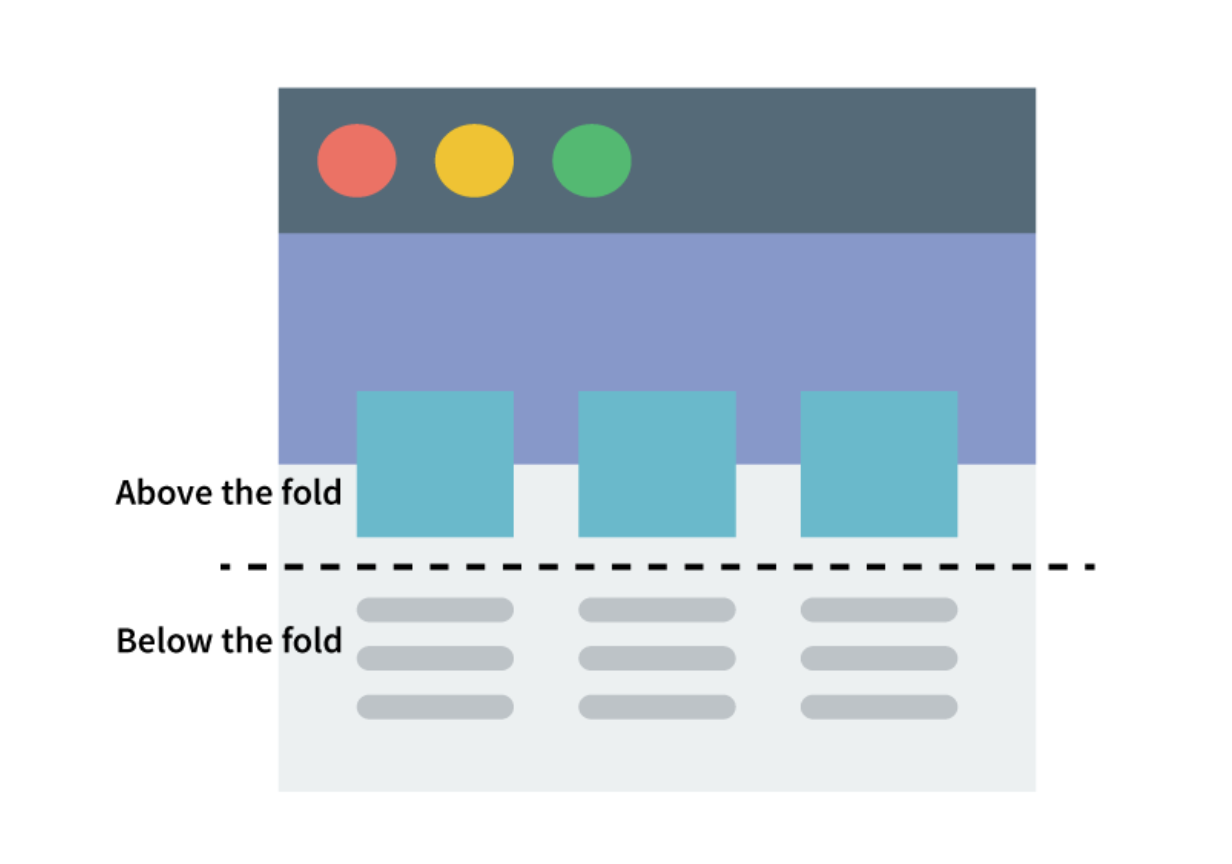Ensuring that your website is effective and optimized for SEO is no easy task; there’s a lot of parts that need to be manipulated, and some are more important than others. You need to think about everything from your web design to the content you publish to your analytics software and more. All of the parts need to work well together in order to give your consumers a user-friendly experience that search engines will recognize as well. That’s why we’ve put together this extensive checklist so that you have everything you need for your website to be successful.
1. Install an SEO plugin to your CMS.
We recommend Yoast SEO, All in One SEO, or the SEO Framework. These plugins do everything from creating sitemaps to optimizing metadata and ensuring your content is optimized for SEO.
2. Install Google Analytics.
It’s FREE and it will teach you everything you need to know about who is visiting your website and how they’re interacting with it. Additionally, you can also link Google Search Console to track your performance see your ranking keywords.
3. Create a list of keywords to target.
This list should be short- we recommend 1-5 words. Use Google Keyword Planner, Ahrefs Keyword Explorer or Moz Keyword Explorer to determine which keywords to target (look at the data on difficulty and competition), and then limit your words to one per page.
4. Optimize ALL your URLs.
They should be short (limit the number of characters, symbols, and numbers) and readable. Include your target keyword when relevant, but overall make them descriptive and easy to remember/ retype. This goes for everything from your webpages to blog posts and more.
5. Don’t forget about page descriptions.
Page descriptions are often overlooked even though they’re one of the best ways you can incorporate keywords and ensure your site gets ranked. Keep your descriptions under 300 words and try to incorporate compelling language and CTAs.
6. Keep all your most important content above the fold.
People don’t like to scroll, and the data shows that you start to lose their attention after they pass the fold. Thus, put the content you absolutely want them to see before the scroll line so it doesn’t get overlooked.
7. Make sure your navigation is clear.
People aren’t going to go searching for the information they need; if they can’t find it immediately on your site, they’re going to bounce and go looking for it elsewhere. Your website should be easy to navigate so users can access the most important parts quickly. It needs to be useful, usable, and accessible. Navigation bars are generally preferable to hamburger menus as it reduces the need to click and scroll. Additionally, your web design should be consistent with your brand (similar fonts, colors, and image styles).
8. Optimize your site for mobile.
70% of online traffic happens on mobile devices as opposed to tablets or desktops, so your website needs to be mobile-friendly. Many platforms like Squarespace and WordPress have mobile optimization built into their design, but you still need to check and make any necessary changes to ensure all your content is visible and your site is easy to browse on a small screen.
9. Create a blog.
Your website should absolutely have a blog that you publish to at least once a month, if not more. Create and share valuable content and invite your users to view and contribute to your content as well.
10. Include a contact form.
This is essential in order to generate leads for your business. Ask users to subscribe to your blog and email lists, and make sure you have a page on your website where they can leave their contact information.
11. Optimize your images.
This is another way to improve your website SEO that people often overlook; all your images should be saved with descriptive keywords in their titles. “Chicagopizza.jpg” will rank much better than “Screenshot2473.jpg”. Try to reduce the file size as much as possible without sacrificing image quality.
12. Check your website speed.
Page speed has a direct impact on rankings, traffic, and conversions. Data shows that users won’t wait more than 3 seconds for a page to load before bouncing, and a slow website is one of the best ways to encourage your consumers to check out the competition. You can improve your website speed by reducing your file and image sizes, uploading both Javascript and CSS, and keeping plugins and redirects to a minimum.
13. Utilize link building strategies.
Link building is still one of the best ways to improve SEO ranking; focus on building quality links as opposed to quantity. Google will recognize the spammy links and penalize you for them. You can build links through guest posting on authoritative websites, building on broken links, and utilizing resource pages.
The Takeaway
It doesn’t matter if your site is new or old or how you’ve designed and optimized it in the past; if you follow our checklist your users will be happy and so will the search engines! You’ll see an improvement in your rankings before you know it. For more information on how to create a strong post, check out this article! Is there anything missing that you think is vital to our list? Comment in the section below!
feature image credit: islandmediamanagement.com
image 1: yoast.com
image 2: medium.com




